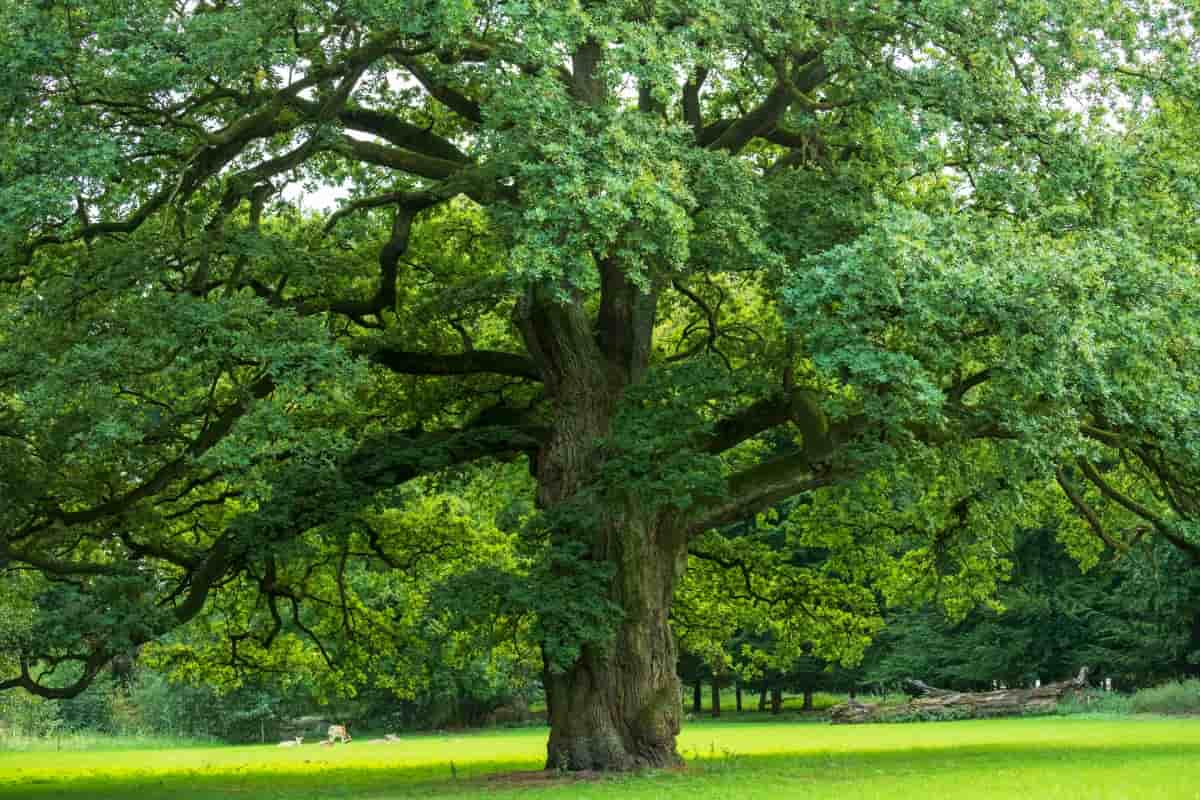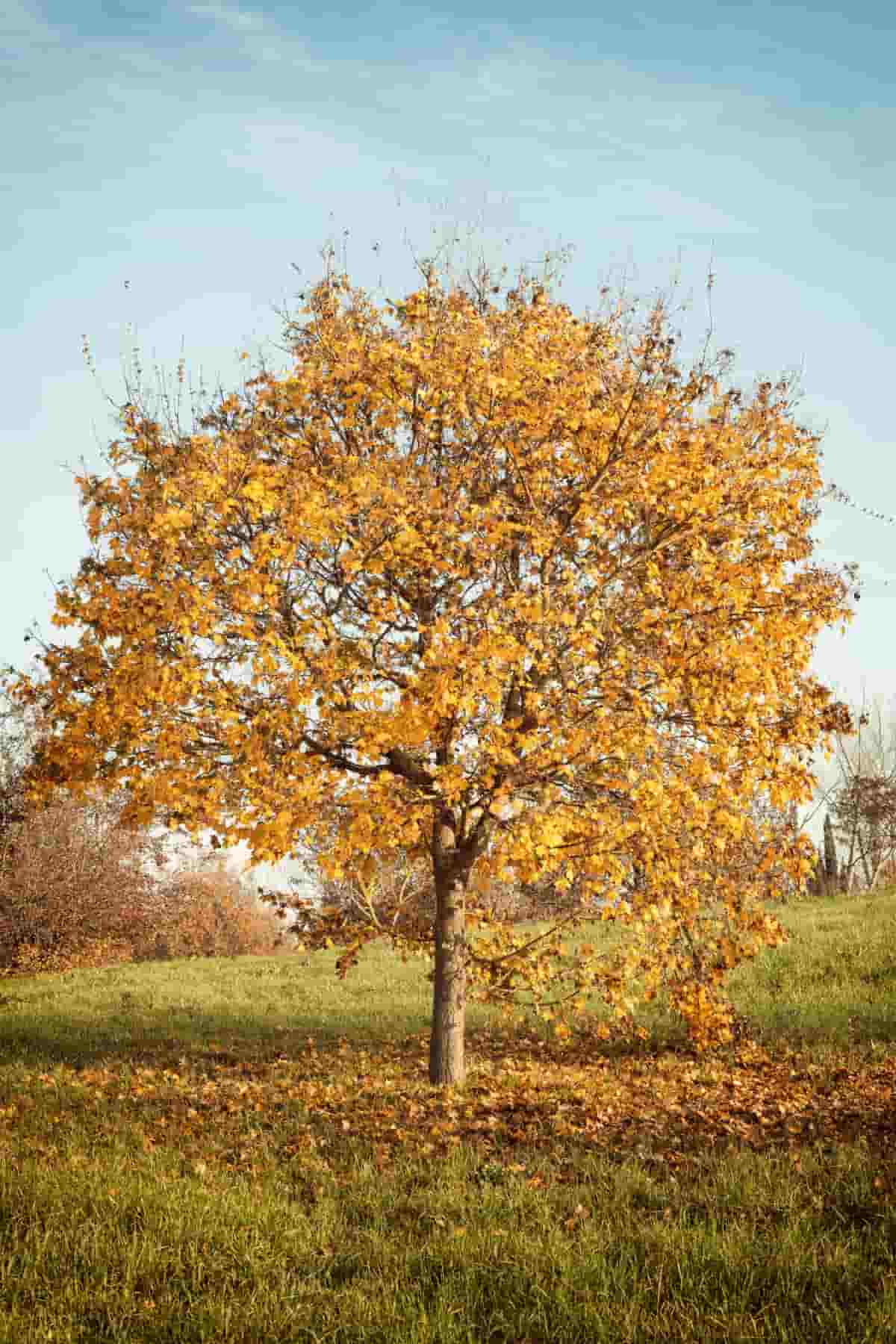The majestic beauty and long life of Oak trees make them a favorite among tree lovers. It is essential to prune these trees properly to maintain their health and aesthetics. Understanding the best time to trim Oak trees and employing the correct pruning methods and strategies is crucial for their well-being. This article will provide valuable information on when to prune Oak trees and the various pruning techniques you can use.

Best Time to Trim Oak Trees
Understanding the Growth Cycle of Oak Trees: When to Trim for Optimal Health and Growth
- Oak trees have a unique growth pattern with distinct stages. In the spring, new leaves and branches develop rapidly, followed by the formation of acorns in the summer.
- During the fall, Oak trees shed their leaves. Winter is a dormant period where growth slows down.
- When to trim Oak tree? To ensure the best results, pruning Oak trees should be done during their dormant phase in late winter or early spring. This timing allows the tree to heal efficiently and promotes healthy regrowth.
- Proper trimming during the right growth phase is essential for maximizing the health and growth of Oak trees.
Factors to Consider Before Trimming Oak Trees: Climate, Species, and Tree Age
When is the best time to prune an Oak tree? It will depend on the following factors. Different climates have different effects on tree growth and health. For example, Oak trees in hot and dry climates may require more frequent trimming to remove dead or damaged branches, while those in cooler and wetter climates may require less frequent trimming. It is important to understand the specific needs of Oak trees in the given climate and adjust the trimming schedule accordingly.
The second factor to consider is the species of Oak tree. There are many different species of Oak trees, each with unique characteristics and growth habits. Some species may naturally have a more open canopy, requiring less frequent trimming to maintain a desirable shape. Others may have a denser canopy and require more frequent trimming to prevent overgrowth and maintain proper air circulation. Understanding the specific species of Oak tree will help determine the appropriate trimming schedule and techniques.
The third factor to consider is the age of the Oak tree. Younger Oak trees generally require less frequent trimming as they are still growing and establishing their structure. However, as Oak trees mature, they may require more frequent trimming to remove dead or diseased branches, improve the overall shape, and prevent potential hazards. It is important to assess the age of the Oak tree and adjust the trimming schedule accordingly to promote healthy growth and longevity.
The Importance of Timing: Determining the Best Season to Trim Oak Trees
- Do you know when to trim Oak trees? Generally, the ideal time to trim Oak trees is during the dormant season, which usually falls in late winter or early spring, prior to new growth begins.
- During this time, the tree’s natural defense mechanisms are less active, minimizing the risk of disease and pest infestation.
- Additionally, trimming Oak trees during the dormant season allows for better visibility of the Oak tree’s structure, aiding in identifying damaged or weak branches that need to be removed.
- Avoid trimming Oak trees during the summer months when they are actively growing, as this can stress the tree and increase the chances of disease or insect infestation.
- By carefully considering the timing for trimming Oak trees, homeowners can promote their overall health and enhance their aesthetic appeal.
In case you missed it: How to Identify and Control Oak Wilt: Preventions and Treatment Methods

Pruning Techniques for Oak Trees: Selective Branch Removal and Crown Thinning
The selective removal of branches involves pruning Oak trees branches that are diseased, damaged, or crossing over one another. When these branches are removed, the tree’s overall structure is improved, which reduce the risk of branch failure and improves air circulation within the canopy. In many cases, this method is used to enhance the shape of the tree or to promote new growth.
Crown thinning is one of the most common tree pruning methods. Trees are typically pruned in this way to reduce their weight, improve air circulation, or let more light into the canopy. During crown thinning, you should try to remove one-fourth of the smaller branches throughout the tree’s canopy.
Structural Pruning: Shaping Young Oak Trees for Proper Form and Strength
Structural pruning is crucial for shaping young Oak trees for proper form and strength. Selectively removing certain branches can guide the tree’s growth and prevent future problems. The primary goal of structural pruning is to establish a central leader, the main upward-growing stem. This leader should be dominant over other competing branches to prevent weak attachments and the risk of future breakage. Removing competing branches early on encourages the central leader to develop, creating a strong and stable trunk.
When can you trim Oak trees? It is essential to prune when the tree is young, as this allows for more flexibility and encourages the tree to develop a solid framework. Regular pruning during the early years also helps to correct any potential defects and maintain the desired shape. When pruning, it is crucial to follow proper pruning techniques, such as making clean cuts and avoiding unnecessary damage to the tree’s bark.
Restorative Pruning: Revitalizing Older or Damaged Oak Trees
Restorative pruning is an essential practice for revitalizing older or damaged Oak trees. As Oak trees age, they may experience various issues, such as broken branches, disease, or insect infestation. Restorative pruning helps to address these problems, promoting the health and longevity of the tree. The primary goal of restorative pruning is to remove dead, diseased, or damaged branches. This improves the tree’s appearance and prevents further spread of diseases and pests.
In case you missed it: Best Time to Repotting Snake Plant: Problems and Solutions After Repotting

Additionally, it allows for good air circulation and sunlight penetration, which are crucial for overall tree health. When conducting restorative pruning on Oak trees, following proper pruning techniques to minimize stress and potential damage is important. This includes making clean cuts outside the branch collar, avoiding excessive removal of live branches, and maintaining the tree’s natural shape.
Safety Measures when Trimming Oak Trees: Equipment, Hazards, and Precautions
- Firstly, it is essential to have the necessary equipment for Oak tree trimming, such as a sturdy ladder, safety harness, pruning shears, and gloves. These tools help protect against potential injuries and ensure efficient work.
- Secondly, understanding the hazards associated with Oak tree trimming is crucial. Falling branches, electrical wires, and uneven terrain pose significant risks.
- Finally, taking precautions like wearing protective gear, assessing the tree’s stability, and identifying potential hazards can greatly minimize accidents. Adhering to these safety measures can significantly reduce the risk of injuries.
Avoiding Common Mistakes: Pruning Practices that Can Harm Oak Trees
Proper pruning is vital for maintaining the health and beauty of Oak trees. However, some common mistakes can harm these majestic trees if not avoided. One common mistake is “topping,” which involves cutting off the top of the tree. This can lead to weak growth and increase the tree’s vulnerability to diseases and pests.
In case you missed it: Pruning and Trimming Techniques for Container Plants

Another mistake is pruning too much of the inner branches, which can disrupt the tree’s natural growth pattern and reduce its ability to produce food through photosynthesis. It is also important to avoid pruning during the summer months when Oak trees are most vulnerable to diseases. By not making these mistakes, you can ensure your Oak trees’ long-term health and vitality.
Conclusion
The most favorable period for pruning Oak trees is during the dormant period, typically in late fall or winter when the tree is in a state of rest. Employ proper pruning methods and strategies, such as removing dead or diseased branches, maintaining a balanced canopy, and avoiding excessive pruning. Following these guidelines will promote the overall well-being and longevity of Oak trees.
- Feed Your Flock for Less: Top 10 Tips to Save on Chicken Feed
- Ultimate Guide to Ossabaw Island Hog: Breeding, Raising, Diet, and Care
- Hatching Answers: The Top 10 Reasons Your Chickens Aren’t Laying Eggs
- Eggs and Economics: Breaking Down the Cost of Raising Backyard Chickens
- Defend Your Greens: Proven Methods to Keep Iguanas Out of Your Garden
- Ultimate Guide to Cinnamon Queen Chicken: A Comprehensive Guide for Beginners
- Ultimate Guide to California Tan Chicken: Breeding, Raising, Diet, Egg-Production and Care
- Ultimate Guide to Marsh Daisy Chicken: Breeding, Raising, Diet, and Care
- 10 Types of Chicken Farming Businesses You Can Start for Profits